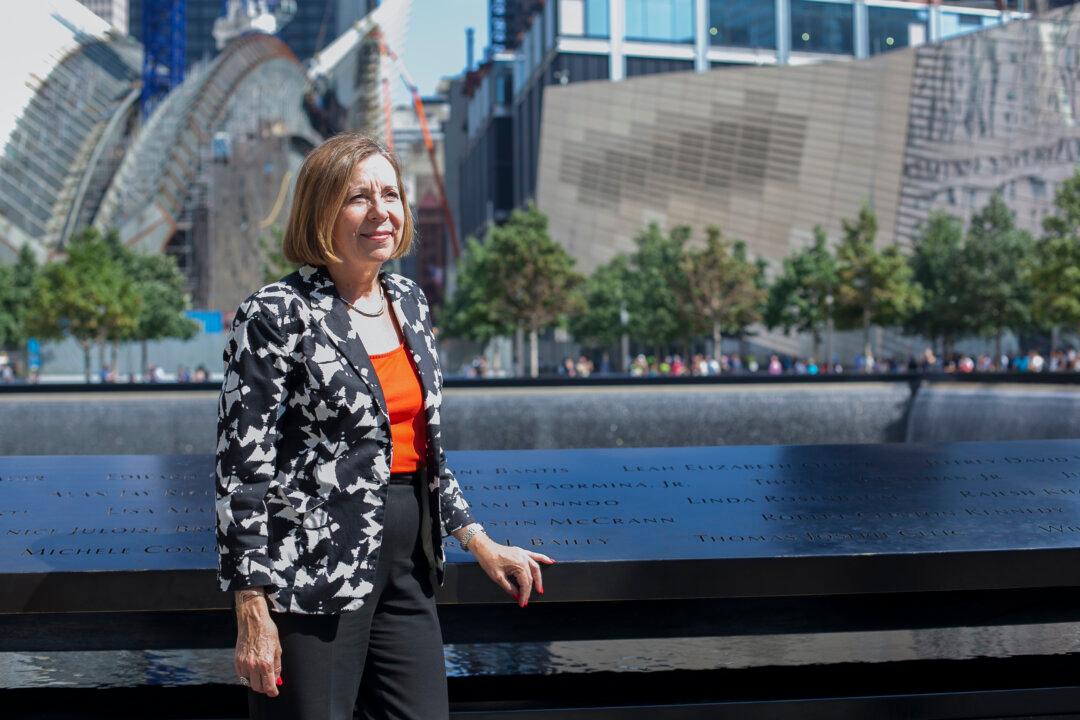NEW YORK—There’s the survivors’ staircase. A remnant of the Vesey Street stairs that hundreds used to escape infamy on the morning of Sept. 11, 2001. In an uncanny, vicarious way, one descends the steps alongside the artifact to enter the 9/11 Memorial Museum’s underground exhibitions. Inside, within every few steps, there is a reminder of terror: a piece of contorted steel; a mangled fire truck; a wiry elevator motor that once lifted workers up to skyscrapers, now lifeless, rusting. And for the umpteenth time, Alice Greenwald walks through the exhibits.
To survive as the director of the 9/11 Memorial Museum, Greenwald retains a strong belief in the human capacity to be good.
She goes two stories above the exhibits to the cafe, a simplistically designed space lit purely by late afternoon sunlight. Her pearl-shaped eyes scan the room and rest on the One World Trade Center, looming outside the window.
“This is ground zero for what we build up, not what came down,” she said.
When asked what is her response to the criticism of opening a cafe on a site of mass murder, she said, quite simply, that it’s a place to gather one’s thoughts before or after a visit.
And as for the criticized gift shop, she said, it is a practical solution to maintaining a free public space that receives no public funding.
“Someone has to make sure the trees are irrigated, the waterfalls are clean, and the filters are working,” she said.





